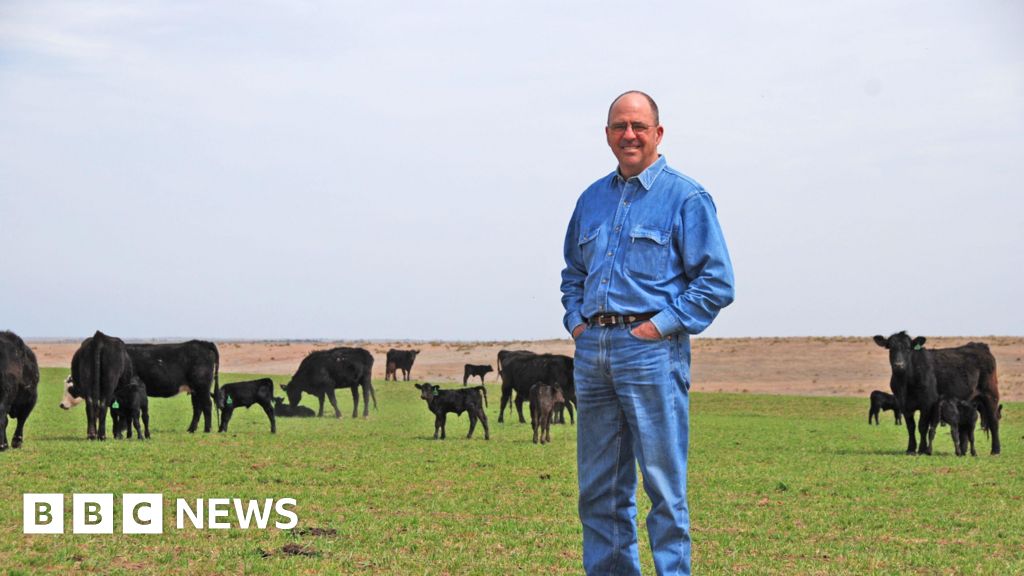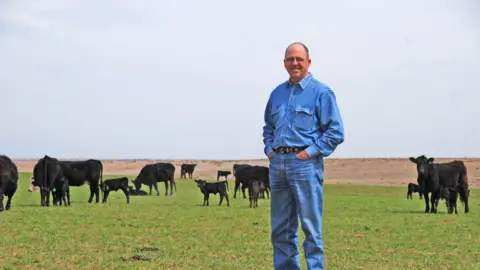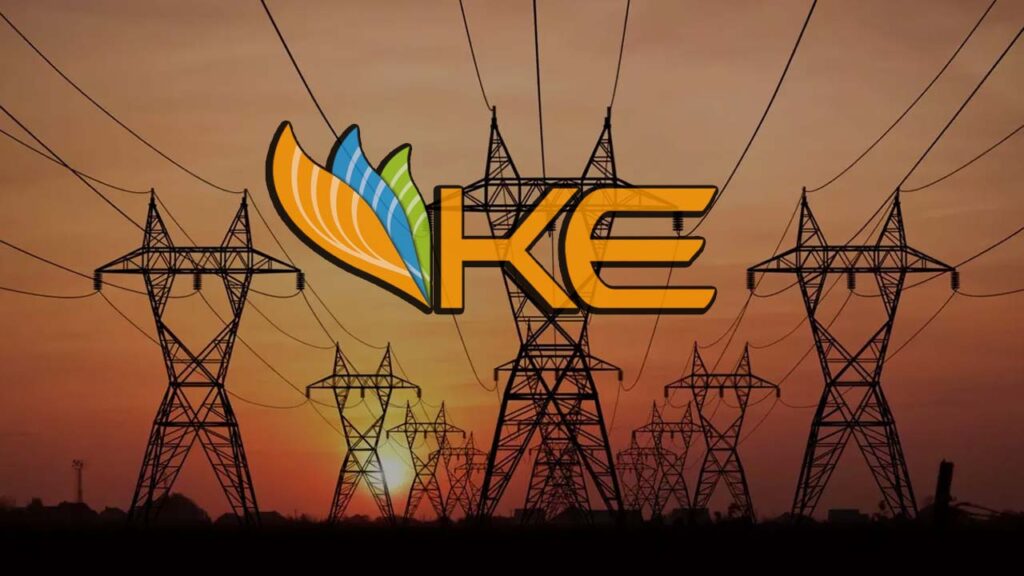BEIJING, Oct. 24 (Xinhua) — China is transitioning from being a user of space technology to a major contributor to humanity’s cosmic understanding, said Wang Chi, an academician of the Chinese…
Blog
-
China becoming key contributor to cosmic understanding, academician says
(Xinhua) 10:24, October 25, 2025 -

New insight into TRPM3 heat sensor reveals how the body detects temperature
The ability to sense heat protects the body from burns and injury. But how the body actually feels temperature has remained an elusive mystery.
Now, Northwestern University researchers have captured a detailed look at one of the…
Continue Reading
-

Signs of deadly bird flu detected on Australian sub-Antarctic island – news.cgtn.com
- Signs of deadly bird flu detected on Australian sub-Antarctic island news.cgtn.com
- Scientists fear bird flu outbreak after elephant seal deaths on Heard Island Australian Broadcasting Corporation
- Suspected H5 virus detected after elephant seal…
Continue Reading
-

Primis Financial (FRST) Earnings Turn Positive, But Revenue Decline Challenges Bullish Narratives
Primis Financial (FRST) has turned the corner to profitability in the past year, with earnings now positive after years of steep declines. Earnings had been down 45.3% per year over the last five years. While earnings are forecast to surge by 61.4% per year, revenue is expected to decline 4.3% annually across the next three years. This sets up a sharp contrast for investors to consider. The combination of outsized forecasted earnings growth and ongoing revenue headwinds comes as the stock commands a price-to-earnings ratio of 30.7x, far above both industry (11.2x) and peer (14.3x) averages.
See our full analysis for Primis Financial.
Now, let’s see how these reported numbers stack up against the broader market and community narratives that have shaped sentiment around Primis Financial.
See what the community is saying about Primis Financial
NasdaqGM:FRST Revenue & Expenses Breakdown as at Oct 2025 -
Core expense reductions are set to trim approximately $1.5 million per quarter through 2026, driven by renegotiated technology contracts, vendor consolidation, and workforce reallocation.
-
Analysts’ consensus view stresses that these operational moves materially support higher net margins and greater earnings durability, yet highlight two key tensions:
-
To see how efficiency shapes future profit forecasts, check the full consensus argument in the company’s narrative. 📊 Read the full Primis Financial Consensus Narrative.
-
Revenue is forecast to shrink by 3.7% per year over the next three years, with guidance reflecting the impact of weaker loan growth and more cautious expansion in specialized business lines.
-
Analysts’ consensus view outlines two main themes in the revenue story:
-
With a price-to-earnings ratio of 30.7x, Primis Financial trades at a substantial premium to both its peer group (14.3x) and the US Banks sector average (11.2x), raising the bar for future performance to justify this valuation.
-
Analysts’ consensus view spotlights the following tensions in the valuation narrative:
To see how these results tie into long-term growth, risks, and valuation, check out the full range of community narratives for Primis Financial on Simply Wall St. Add the company to your watchlist or portfolio so you’ll be alerted when the story evolves.
View the data from a different angle? You can transform your outlook into a personal narrative in just a few minutes, and Do it your way.
A great starting point for your Primis Financial research is our analysis highlighting 2 key rewards and 3 important warning signs that could impact your investment decision.
Continue Reading
-
-

Understanding ADHD: Symptoms, diagnosis, and support
SINGAPORE – For father-of-four Esmond Wee, 44, living with attention deficit hyperactivity disorder (ADHD) means buying five pairs of earplugs – because he keeps misplacing them – to ease sensory overload.
Such sensitivity to noise and…
Continue Reading
-

WHO pleads for sick Gazans to be allowed to leave
GENEVA (AFP) – The UN’s health agency pleaded Friday for thousands of people in desperate need of medical care to be allowed to leave Gaza, in what it said would be a “game-changer”.
The World Health Organization…
Continue Reading
-

Picasso portrait of muse Dora Maar in vivid hat, long hidden from view, sells for 32 million euros
PARIS — A vividly hued Picasso portrait of longtime muse and partner Dora Maar that had remained hidden from public view for more than eight decades sold Friday at auction for 32 million euros (about $37 million), including fees — surpassing…
Continue Reading
-

US beef prices are soaring. Will Trump’s plans lower them?
Danielle KayeBusiness reporter
 Mike Callicrate
Mike CallicrateMike Callicrate, a cattle rancher who has built a direct-to-consumer operation, at his farm in St Francis, Kansas. Beef prices have gotten so high in the US that it has become a political problem.
Even Donald Trump, who long ago declared inflation “dead”, is talking about it, as the issue threatens to undercut his promises to bring down grocery prices for Americans.
This week, he took to social media, urging ranchers to lower prices for their cattle.
But his demand – and other proposals his administration has floated to address the issue – has sparked a backlash among ranchers, who worry some of his solutions will make it harder for them to make a living, while making little dent at the grocery store.
The number of beef cattle farmers and ranchers in the US has dwindled steadily since 1980, reducing domestic supplies and driving up prices, as demand remains high.
The country’s cattle inventory has fallen to its lowest level in nearly 75 years, while the US has lost more than 150,000 cattle ranches just since 2017 – a 17% drop, according to the Agriculture Department.
Ranchers say they are under pressure from four decades of consolidation among the meat processors that buy their livestock, while high costs for key inputs like fertiliser and equipment have intensified the strain.
The contraction in the industry has worsened, as several years of drought have forced ranchers to slash their herds.
Christian Lovell, a cattle rancher in Illinois, said parts of his farm that were lush and grassy when he was a child have now dried up, limiting where his cows can graze.
“You put all these together and you have a recipe for a really broken market,” said Mr Lovell, who works with advocacy group Farm Action.
Beef inflation
Retail prices for ground beef rose 12.9% over the 12 months to September, and beef steaks were up 16.6%, according to US inflation data published Friday by the Bureau of Labor Statistics.
A pound of ground chuck now costs an average of $6.33 (£4.75), compared with $5.58 a year ago.
The increases have significantly outpaced general food inflation, which stood at 3.1%.
“The cattle herd has been getting smaller for the last several years, yet people are still wanting that American beef – hence the high prices,” said Brenda Boetel, a professor of agricultural economics at the University of Wisconsin, River Falls.
Derrell Peel, a professor of agricultural economics at Oklahoma State University said he expected prices to remain elevated until at least the end of the decade, noting that it takes years to replenish herds.
The Trump administration’s “hands are tied” when it comes to interventions that will help lower prices, Mr Peel added.
 Reuters
ReutersUS President Donald Trump with Javier Milei, president of Argentina, which accounts for just 2% of American beef imports ‘Chaos’ for American producers
The Agriculture Department this week unveiled what it called a “big package” aimed at ramping up domestic beef production, by opening more land for cattle grazing and supporting small meat processors.
That proposal came after Trump drew the ire of ranchers when he proposed to import more beef from Argentina, potentially quadrupling the purchases.
Eight House Republicans responded with a letter to the White House expressing concern about Trump’s import plans.
Even the National Cattlemen’s Beef Association, which has voiced support for Trump’s policies in the past, said the import plan “only creates chaos at a critical time of the year for American cattle producers, while doing nothing to lower grocery store prices”.
Trump responded by assuring farmers that he was helping them in other ways, noting tariffs that are limiting imports from Brazil.
“It would be nice if they would understand that, but they also have to get their prices down, because the consumer is a very big factor in my thinking, also,” Trump wrote.
But that has failed to quell the furore.
Justin Tupper, president of the US Cattlemen’s Association, said he thought that only the big four meat packers would benefit from Trump’s import plan.
“I don’t see that lowering prices here at all,” Mr Tupper said.
‘These are consolidated markets’
Some say the government could make an impact if it focused on the way a handful of companies dominate the market for meat processing.
Today, just four companies control more than 80% of the beef slaughtering and packing market.
“These are consolidated markets gouging ranchers and gouging consumers at the store,” said Austin Frerick, an agricultural and antitrust policy expert and a fellow at Yale University.
The meat processing firms – Tyson, JBS, Cargill and National Beef – have faced several lawsuits, including one filed by McDonald’s alleging they colluded to inflate the price of beef.
Though Trump revoked a Biden-era order earlier this year that directed agencies to tackle corporate consolidation across the food system, his administration has taken other steps to investigate competition issues in the agricultural industry.
‘We’re not going to rebuild this cow herd’
Mike Callicrate runs a cattle ranch in St Francis, Kansas. He said the only way he has managed to stay in the industry was by cutting out the middleman and setting up his own stores to reach consumers directly.
But Mr Callicrate acknowledged that most ranchers do not have the money to make that shift. Many have left the industry – and see no incentive to jump back in.
“We’re not going to rebuild this cow herd – not until we address market concentration,” Mr Callicrate said.
He said he supported the Agriculture Department’s plans to open up more cattle grazing land to boost production and bring down retail prices.
“But unless we have a market,” he added, you’re a “fool to get into the cattle business”
 Bill Bullard
Bill BullardBill Bullard, the chief executive of R-CALF USA, a cattle producer trade association, said ranchers have seen a recovery in cattle prices over the past year. Bill Bullard found himself in the first wave of ranchers pushed out as the meat processing industry started to consolidate in the early 1980s.
He closed down his 300-cow operation in South Dakota in 1985.
Mr Bullard, who is now the chief executive of R-CALF USA, a cattle producer trade association, said it was only in the last year or so that ranchers had received good prices for their livestock, as supply dropped to such a low level that the prices paid by meat processors “simply had to increase”.
Still, reliance on imports and meat packers’ buying power persist, Mr Bullard said, meaning ranchers “lack confidence in the integrity of the marketplace” and remain reluctant to grow their herds.
He said he did not have confidence that the president’s ideas would fix the issues.
“He’s focused on the symptoms and not the problems,” he said.
Continue Reading
-

OPPO Redefines Personalized Mobile AI Experiences with Google
MADRID, SPAIN –
Media OutReach Newswire – 25 October 2025 – OPPO, a leading global smart device brand, today announced a deeper collaboration with Google to redefine personalized and secure mobile AI, focusing on personalized AI…Continue Reading
-

Saudi, Kuwaiti investors in K-Electric serve $2bn dispute notice to Pakistan government: report
A consortium of Saudi and Kuwaiti investors in K-Electric has issued a formal notice of dispute to the Government of Pakistan, seeking $2 billion in compensation for alleged breaches of investment rights, The News reported.
The timing of the…
Continue Reading
